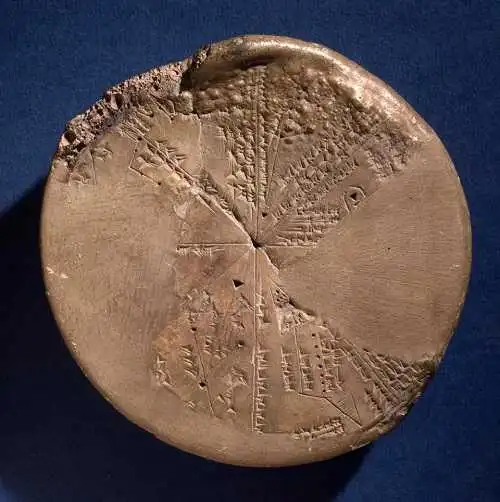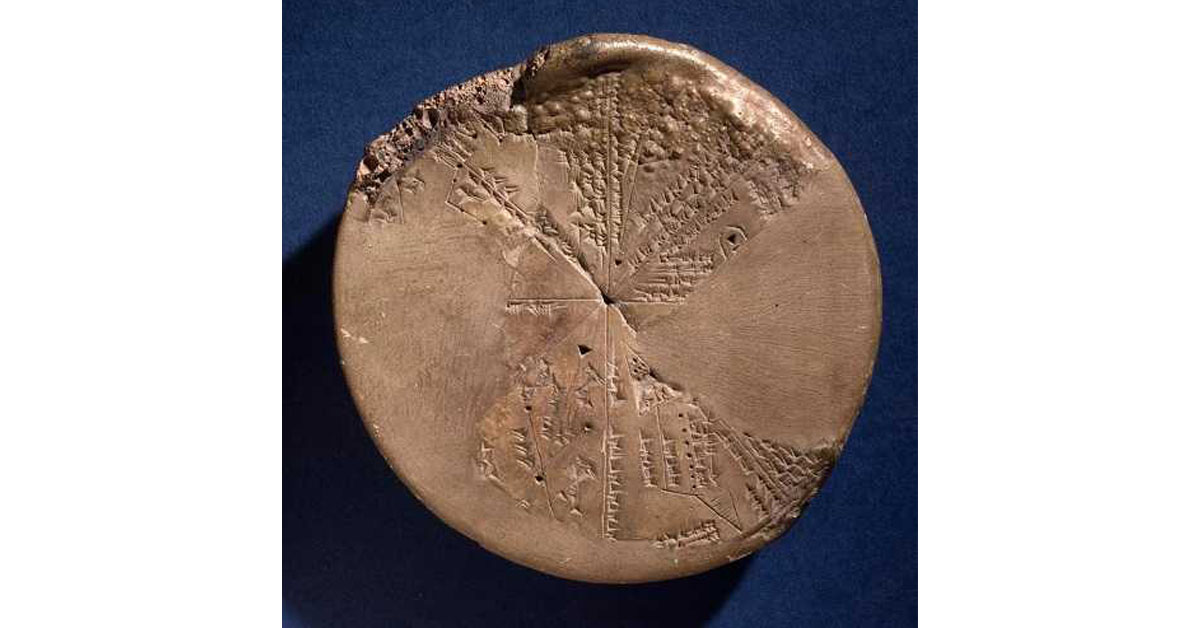Mysterious 5,500-Year-Old Sumerian Star Map Recorded Massive Asteroid Hit To Earth
A 5,500-year-old clay tablet discovered in the 19th century in the underground library of King Ashurbanipal in Nineveh is an astronomical treasure.

The ancient “document” excavated in present-day Iraq by Sir Henry Layard offers unprecedented insight into astronomical observations that took place more than 5,500 years ago in ancient Mesopotamia.
Long believed to be an Assyrian tablet, computer analysis that compared it to Mesopotamia’s sky in 3300 BC has revealed that it actually has much older Sumerian origins.
The “Astrolabe,” the earliest known astronomical instrument, is depicted on the tablet. It consists of a segmented disk-shaped star chart with rim markings for the many angles that can be measured.
For more than 150 years, experts have been baffled by the ancient clay tablet housed in the British Museum. The Cuneiform tablet No. K8538 in the British Museum collection is known as “the Planisphere.” (Source)
Over 5,600 years ago, an amazing event occurred when a kilometer-long asteroid collided with the Alps in Köfels, Austria. Unfortunately, significant portions of the planisphere on this tablet (approximately 40%) are missing, due to damage caused by the sacking of Nineveh. The reverse of the tablet is not inscribed.
Archibald Sayce and Robert Bosanquet discovered the tablet’s astronomical relation in 1880 and named it “Astrolabe.” Leonard William King took the first step toward content analysis by creating a picture facsimile of the tablet. In 1912, his work was published.
The image facsimile of the cuneiform writing signs is perfectly transliterated, but he did not translate the facsimile signs into modern language.
He joined an archaeological expedition to the same site at Nineveh hoping to find other astronomical tablets with additional information, but nothing useful was ever found. King presumed that K8538 was a “Planisphere,” showing the night sky over Nineveh.
Three years later, in 1915, Ernst F. Weidner released his work on K8538. He made an effort to decipher each of the 8 distinct tablet parts on the book’s six pages, but the text remained a mystery to him. He described it as “magic.” Because the star distributions on the tablet do not match those in the Nineveh sky, he rejected King’s term “Planisphere.”
Two authors, Alan Bond and Mark Hempsell ultimately made significant advances twenty years later. They note in the introduction to their book that, up until 2008, “there has never been a comprehensive and consistent translation of this unique tablet [which] might relate to an impact of a Near Earth Object.” (Source)
They re-translated the cuneiform inscription and claimed the tablet recorded the Köfels’ Impact, an ancient asteroid strike that struck Austria somewhere around 3100 BC. This caused a stir in the archaeological community.
Since geologists first examined the massive landslide in the 19th century, it has been a mystery. It is 500m deep and has a five-kilometer circle. It is situated near Köfels in Austria. Due to the evidence of crushing pressures and explosions, researchers in the middle of the 20th century came to the conclusion that it must have been caused by a very huge meteor impact.
Since Köfels lacks a crater, it does not appear as an impact site should to modern eyes. The idea that it is just another landslide, however, does not account for the facts that confounded the prior experts.
What ties the complex Sumerian star chart found in the Nineveh library’s subterranean to the enigmatic impact that happened in Austria?
The clay tablet may be examined to determine that it is an astronomical work because it features drawings of constellations and names of recognized constellations in the text. Although it has received a lot of attention, no one has offered a credible explanation for what it is after more than a century.
The researchers have identified what the Planisphere tablet alludes to using contemporary computer algorithms that can mimic trajectories and recreate the night sky thousands of years ago.
The K8538 observation tablet was created by an unknown alert Sumerian astronomer who recognized the historical significance of the event on his astronomical lookout tower and decided to record it. Bond and Hempsell dubbed him “Lugalansheigibar – the great man who observed the sky.”
Half of the tablet records planet positions and cloud cover, just like any other night, but the other half records an object large enough to note its shape even though it is still in space.
The astronomers accurately recorded its trajectory relative to the stars, which is consistent with an impact at Köfels to within one degree of error.
The observation indicates that the asteroid is larger than a kilometer in diameter and that its original orbit around the Sun was an Aten type, a class of asteroid that orbits close to the Earth and is resonant with the Earth’s orbit.

This trajectory explains why there is no crater at Köfels. The incoming angle was very low (six degrees), which means the asteroid clipped a mountain called Gamskogel above the town of Längenfeld, 11 kilometers from Köfels, causing the asteroid to explode before it reached its final impact point. It grew into a five-kilometer-wide fireball as it traveled down the valley (the size of the landslide).
When it hit Köfels, it created enormous pressures that pulverized the rock and caused the landslide, but it did not create a classic impact crater because it was no longer a solid object.
Mark Hempsell, discussing the Köfels event, said: “Another conclusion can be made from the trajectory. The back plume from the explosion (the mushroom cloud) would be bent over the Mediterranean Sea re-entering the atmosphere over the Levant, Sinai, and Northern Egypt.”
“The ground heating though very short would be enough to ignite any flammable material – including human hair and clothes. It is probable more people died under the plume than in the Alps due to the impact blast.”
As a very rare scientific observation tablet, the K8538 provides comparative facts that aid in realistic forecasts of asteroid devastation and the resulting megadroughts on Earth.
The British Museum is now in charge of preserving and protecting this valuable document, which was created by Sumerian astronomer Lugalansheigibar.




